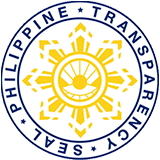Looking around the community, it looks as if it had always been healthy and typical for a lowland barangay. Patches of vegetable farms and sporadic fruits trees can be seen around the community. It is difficult to imagine what the community looks like a year ago.
Barangay Guimba, San Juan, Abra is plagued by floods especially during the rainy season. Residents cannot plant in their farms or engage in livestock farming since knowing by experience, they will eventually lose those to the floods. Community members are too focused in taking care of their families and saving their properties during extreme weather conditions.
Punong Barangay Ricky Bernos narrated that whenever a typhoon hits the province, the community would keep watch of the Malanas River, which is roughly 15 meters away from the major residences.
“The flood became a usual thing in our barangay, so we are already used for overnight watch during disasters,” Bernos stated in vernacular. Sometimes, we would spend all day evacuating once we are informed of a typhoon or monsoon rains, he added.
Bernos also related that there were efforts of the local government unit to build a flood control. However, the flood control only made a small difference. “Our community is still flooded whenever the river swells,” Bernos continued.
“When we first heard about Kalahi-CIDSS, we grabbed the opportunity to partner with the program as we learned that they could help us build our capacities at the same time assist us implement a community project,” Bernos recalls. Unfortunately, the barangay was not prioritized during the first cycle implementation of Kalahi-CIDSS.
Bernos remembers that many community volunteers were dismayed after they did not make it to the priority projects to be implemented in 2016.
Disappointed as they may have been, they were still persistent that their time will come to implement their proposal to build a better flood control along the Malanas River. Without giving up, the barangay officials and community volunteers worked even harder to convince the assembly during an inter-barangay forum that they need to improve their flood control sooner than later. Their efforts paid off as their barangay was prioritized to implement the cycle 2 of the DSWD Kalahi-CIDSS.
Journey towards completing a community project
Severina Bosque, one of the community volunteers during the second cycle implementation of Kalahi-CIDSS reflected that it was not easy for them to follow the processes in implementing the program. “There were many times that we got overwhelmed on the processes we have to learn in implementing a project. Along the way, we all seem to be running out patience,” she said while letting out a sigh.
Mobilizing the community members is another challenge they had to tread. According to her, many residents doubted the success rate of program after they were not prioritized during the first cycle.
Holding on with the encouragement of their barangay officials and DSWD staff, the community’s doubts and sighs were replaced with smiles and laughter after their project proposal landed the top priority for the second cycle of Kalahi-CIDSS in their municipality.
The community volunteers had mixed feelings of excitement and worry, as it was their first time implementing a community project. “Our worries faded since the Kalahi-CIDSS staff assured us that they will provide trainings,” Severina shared. She also mentioned that she was happy to work as a paid laborer during the construction of the flood control. “I worked mostly on the hauling of aggregates and materials for the project,” she recalled.
After the project was completed in 2017, the community members did not yet feel the benefits of the improved flood control until the monsoon rains, which lasted for a month, affected the barangay on August 2018.
“It feels like a huge burden was lifted from our chest,” Punong Barangay Ricky Bernos commented when asked about their situation during the monsoon rains. “Our barangay didn’t experience flood in 2018,” he continued.
The 421 linear meter flood control now stands as a proof of cooperation and resilience of the people of Barangay Guimba. Cheers, to floods no more.
Kalahi-CIDSS is a program of DSWD that uses the community-driven development process as a strategy in poverty alleviation. #DSWD-CAR, SOCIAL MARKETING UNIT, Jasmin Kiaso




